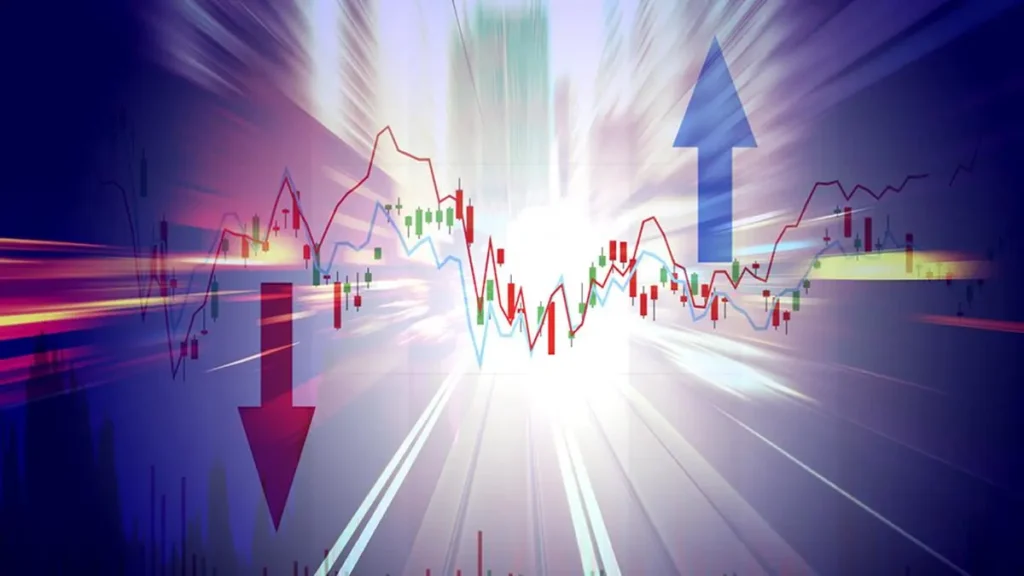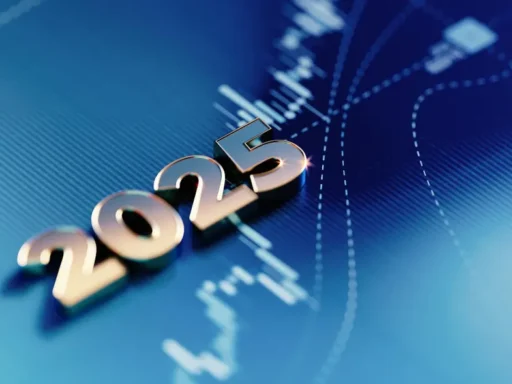
It was a rainy Wednesday morning when I overheard a heated discussion at a coffee shop in Mumbai. Two young investors, sipping espressos and scrolling through Bloomberg, were trying to make sense of the market’s latest tantrum. One blamed inflation, the other pointed fingers at the Fed’s interest rate decisions. And it struck me—we’re all swimming in a sea of economic indicators, but very few know how to actually read the tide.
In today’s hyper-connected, emotionally-charged global economy, understanding the right economic indicators is like having a GPS for market movements. Whether you’re a trader, long-term investor, business owner, or just someone trying to figure out why groceries cost more this month, this article is your compass.
🌍 What Are Economic Indicators, Really?
Imagine economic indicators as the dashboard of your car. They don’t move the vehicle, but they show you what’s happening under the hood. They are data points released by governments, institutions, or agencies that offer insight into the health, growth, and direction of an economy.
Some of the most watched indicators include:
- GDP (Gross Domestic Product)
- Unemployment Rate
- Consumer Price Index (CPI)
- Interest Rates
- PMI (Purchasing Managers’ Index)
- Retail Sales
- Consumer Confidence
Each plays a distinct role, much like instruments in an orchestra. But when one’s off-key—like rising inflation or a drop in consumer confidence—the entire market feels the dissonance.
💸 Inflation: The Market’s Worst Enemy or a Necessary Evil?
You’ve probably noticed prices creeping up—from your favorite streaming subscription to the cost of a quick meal. That’s inflation, and it’s been a hot-button issue since 2021.
Inflation is measured primarily through the Consumer Price Index (CPI) and Producer Price Index (PPI). While a little inflation (around 2%) is healthy for economic growth, high inflation erodes purchasing power and rattles investor confidence.
When inflation spikes:
- Central banks raise interest rates to cool down spending. This happened in the U.S. through Federal Reserve hikes.
- Stocks tend to fall, especially in growth sectors like tech.
- Bond yields rise, impacting borrowing costs and corporate debt.
But here’s the twist—some inflation is a sign of strong demand. So the context is everything.
🏦 Interest Rates: The Puppet Master of Markets
If inflation is the disease, interest rates are the medicine. When central banks like the Federal Reserve or European Central Bank adjust rates, the ripple effect can be felt from Wall Street to small town banks.
Higher rates mean:
- More expensive loans (mortgages, car loans, business credit)
- Attractive bond yields (which may draw investors away from stocks)
- Lower valuations for companies, especially those relying on future earnings
Lower rates mean:
- Cheaper credit, which boosts business and consumer spending
- Stock markets often rally
- Risk-taking increases (sometimes leading to asset bubbles)
Today, central banks walk a tightrope—raising rates to tame inflation without triggering a recession.
👷♂️ Employment Data: Job Numbers Tell a Bigger Story
When the U.S. Bureau of Labor Statistics drops its monthly nonfarm payroll report, Wall Street holds its breath. Why?
Because employment is a real-time indicator of economic strength. More jobs typically mean more spending. Less employment? We’re heading into murky waters.
Pay attention to:
- Unemployment rate
- Labor force participation
- Wage growth
In 2024, despite high rates, unemployment in many developed nations stayed surprisingly low—fueling debates over whether we’re truly in a slowdown or just transitioning.
🏭 PMI: The Factory Pulse of the Economy
The Purchasing Managers’ Index (PMI), released by groups like S&P Global, measures manufacturing and services activity. A PMI above 50 signals expansion; below 50 indicates contraction.
Why it matters:
- It’s a forward-looking indicator—what factories are doing today often reflects how businesses expect the next quarter to go
- It’s closely watched by institutional investors and policymakers
- Sharp drops often precede recessions, as seen in early 2020
🛍️ Retail Sales and Consumer Confidence: What Are People Buying?
The economy, at its heart, is people spending money. And two indicators track this:
- Retail Sales Reports: Published by national statistics agencies, they show how much people are buying across sectors
- Consumer Confidence Index (CCI): Reflects how optimistic (or not) consumers are about the future
If people stop spending, businesses suffer, earnings drop, and stock prices follow. After all, consumer spending accounts for nearly 70% of U.S. GDP, according to BEA data.
🔄 GDP Growth: The Big Picture Metric
GDP (Gross Domestic Product) is the ultimate scoreboard. It tells us whether an economy is growing or shrinking. However, it’s lagging data, often reflecting events from the previous quarter.
Still, it matters because:
- Negative growth over two quarters = recession
- Positive GDP reflects expansion, higher earnings, and investor confidence
Advanced economies today are aiming for modest growth between 1–3%. Anything above that raises overheating fears; anything below sparks recession alarms.
📈 Comparison Table: Key Economic Indicators and Their Market Impact
| Indicator | What It Measures | Market Impact When Rising | Market Impact When Falling |
|---|---|---|---|
| Inflation (CPI, PPI) | Price levels of goods and services | Stocks drop, rates rise, bonds yield more | Stocks rally, rates cut, consumer power increases |
| Interest Rates | Cost of borrowing | Credit slows, bonds up, equities down | Borrowing rises, stocks up, bond yields fall |
| Unemployment Rate | Joblessness in the economy | Market fears, consumer spending drops | More spending, economic optimism |
| PMI | Business activity levels | Market confidence grows | Recession fears, stock sell-offs |
| Retail Sales | Consumer spending trends | Strong earnings outlook | Weak company revenue forecasts |
| GDP | Total economic output | Bullish sentiment | Bearish sentiment |
📚 Real-World Example: 2022–2023 Market Volatility
Let’s rewind a bit.
In early 2022, inflation soared to 40-year highs in the U.S. CPI climbed past 8%, prompting the Fed to aggressively hike rates. Markets tanked. The Nasdaq lost over 30%, while bond yields soared.
Fast-forward to mid-2023, inflation started cooling, thanks to tighter monetary policy. Employment remained strong, confusing analysts who expected a recession. The result? Markets bounced back cautiously. Investors who watched indicators closely avoided panic-selling, while those who didn’t were caught off guard.
💡 Expert Tips: How to Use Economic Indicators in Your Investing
You don’t need to be an economist to use this data wisely. Here’s how to make indicators work for you:
✅ Track Consistently
Subscribe to official economic calendars so you know when key data is being released.
✅ Don’t React Emotionally
One bad jobs report doesn’t mean the world is ending. Look for trends, not just headlines.
✅ Diversify Based on Outlook
If indicators point to high inflation and rate hikes, lean into defensive stocks (like utilities, healthcare). In growth phases, look at tech or emerging markets.
✅ Compare Global Trends
Watch international indicators. For instance, if China’s exports fall, global demand may be slowing—impacting multinational earnings.
❓ Frequently Asked Questions (FAQ)
Q: How often are economic indicators released?
A: Most major indicators like CPI, unemployment, and retail sales are released monthly. GDP is typically quarterly. You can track these via platforms like Investing.com.
Q: Which indicator is the most important?
A: It depends on the market context. During inflationary periods, CPI and interest rates dominate. In recessionary times, GDP and employment data are key.
Q: How do these indicators impact forex and crypto markets?
A: Strong GDP or rate hikes often boost a country’s currency. In crypto, macro indicators indirectly affect risk sentiment, with Bitcoin often behaving like a tech stock.
Q: Should I change my investments after every data release?
A: No. Use indicators to confirm long-term trends. Reactionary investing usually leads to losses.
Q: Are economic indicators ever wrong?
A: They’re not wrong, but they can be revised or misinterpreted. Always use multiple data points for analysis.
🧠 Final Thoughts: Turning Data into Decisions
Markets aren’t just about numbers. They’re about people reacting to numbers. In a world of endless headlines, knowing which economic indicators matter—and how to interpret them—can give you a serious edge.
The next time you hear about a CPI spike or PMI drop, don’t just scroll past. Pause. Ask yourself: What is this telling me about the economy? Use that insight to fine-tune your strategies—whether you’re building a portfolio, launching a business, or simply trying to understand why gas prices jumped again.
If knowledge is power, then economic literacy is financial freedom.


